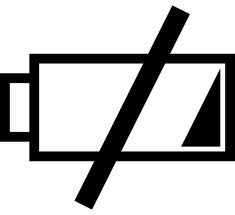Lithium-Ion Battery Life crisis cracked at Northwestern University
Friday, November 18th, 2011 8:03:28 by Usman Khalid
Battery life has been an issue with mobile electronic equipment that live on their sheer power and electric automobiles. They drain out quickly and take forever to recharge. However, students at Northwestern University have cracked the problem. After extensive
research and development they have come up with a solution for a better performance and charging time.
However, first the mechanism should be understood in order to grasp the solution. Currently, the e-equipment in the market runs on lithium-ion batteries. Although they provide a longer life as compared to their predecessors, dry-cell batteries, they are
still insufficient to justify the hi-tech circuitry, even in smartphones.
The lithium ions travel from a positive terminal, called anode, in a solution (electrolyte) to a negative terminal, called cathode, in a cell. The travel produced electronic charge. When connected to an outer electric source, these ions move back to anodes,
and the process is called recharge.
However, in the current mechanism, the electrolyte used in the cells makes the return-journey of the ions slow, ultimately resulting in a slower recharge. Whereas the current Graphene sheets have only one lithium ion covered by six carbon atoms, limiting
the number of ions to produce charge resulting in a shorter battery life.
At Northwestern’s McCormick School of Engineering and Applied Sciences, the students have come up with a solution to the problem. They suggested in a report that instead of using a graphene sheet, a silicon-graphene sheet should be placed. In this mixture,
there is one silicon atom against four lithium atoms, exponentially increasing battery life.
However, the above compound has some serious repercussions. The graphene-silicon sheet has the tendency to expand dramatically in the process of producing electronic charge. The result might be an explosion or deformation of cells.
The students solved this problem as well. They suggested a silicon sheet sandwiched between two graphene sheets for better handling of the expansion. Moreover, there should small pores in external sheets, catalyzing the ion transfer from anode to cathode,
resulting in a better charge.
Despite a revolutionary solution to battery life, the research is incomplete as more is to be done on cathodes. The team stated that a full solution will be available in two to three years. However, users can only wait till 2014/15 till the new battery hits
the markets.
Short URL: https://www.newspakistan.pk/?p=4046

















